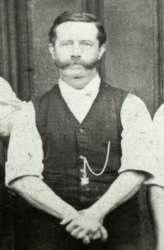 Albert Hill (member 1880 – 1916)
Albert Hill (member 1880 – 1916)Many interesting people have rung at All Saints and their stories provide a cross section of the community of All Saints bellringers, and also of the wider ringing community of which it is a part. . Some of their stories are presented below in the order they first became members. Much of the information here is drawn from the book Living Heritage, the history of ringing at All Saints.
 Albert Hill (member 1880 – 1916)
Albert Hill (member 1880 – 1916)Albert J Hill was born in Devizes, moved to Hampshire as a child, and then came to Wokingham. It’s not clear where he learnt to ring, but it could have been before he came here. He was an able ringer and made a significant impact both at All Saints and in the Sonning Deanery Society, which he helped to set up. After the Society was absorbed as a branch of the newly formed Oxford Diocesan Guild he became the first layman to serve as a branch representative on the Guild General Committee (in 1894). Prior to that, each Branch had a single clerical representative. He became Tower Foreman at All Saints when he was 24 (22 years earlier than this picture in 1902) and he held the post for 16 years. The band prospered under his leadership – ten of the thirty or so ringers in his charge went on to serve for more than a decade, and some for many decades more. He was a blacksmith like his father, and later took up farming.
 Sam Paice (member 1883 – 1920)
Sam Paice (member 1883 – 1920)Samuel Paice (Sam) was a postman. Appropriately for a ringer his house in Goodchild Road was called ‘Ringwell’. He grew up in Yateley and probably learnt to ring there. He moved to Wokingham in his mid twenties (at a time when one in six Wokingham households included someone born elsewhere) and he brought valuable skills to All Saints. He was the first member of the All Saints band to ring a peal, in June 1883 at St Paul’s, and he also rang in the first peal rung entirely by Sonning Deanery ringers, at Sandhurst on 11th March 1899, which was only the second peal rung on the bells. Sam became Foreman at All Saints in 1896, and led the band through the augmentation to eight and the rise in the band's capabilities, including the first peals by the band. He remained Foreman until his death in 1920. For fourteen years he represented Sonning Deanery Branch on the Diocesan Guild General Committee, and in 1905, when the Branch was concerned that quarterly meetings weren’t very effective in promoting change ringing, Sam was one of three people chosen ‘to arrange meetings as seemed most appropriate for this purpose’. At the 1910 AGM he suggested introducing monthly combined meetings at Branch towers – something that continues to this day – and joined another special committee to make it happen. Sam died in 1920, and afterwards the minutes record him modestly as ‘a very great helper to the Branch and ringing generally’.
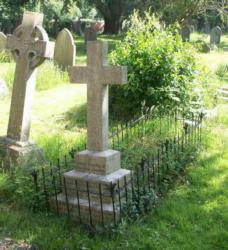 William Loader (member 1886 – 1898)
William Loader (member 1886 – 1898) William Loader doesn't seem to have been a remarkable ringer but he achieved considerable fame outside the tower. He was a farrier based in Peach Street (possibly in the Old Forge at no. 45-47, which is now converted to offices) and he regularly appears to have distinguished himself in competitions. For example, in 1899, the Parish Magazine reported that: ‘William Loader of Peach Street, one of our Bellringers, at the recent Royal Counties Show at Windsor, again took 1st prize for shoeing carriage horses’. William’s grave is appropriately surrounded by an example of the blacksmith’s craft.
 Fred Mattingley (member 1889 – 1925)
Fred Mattingley (member 1889 – 1925)James Frederick Mattingley has the distinction of being the shortest serving Foreman at All Saints. He was a blacksmith by trade, and took up ringing while in his teens. He was almost 50, and had rung at All Saints for 31 years when Sam Paice died in the autumn of 1920. He seems to have been considered Sam’s natural successor, and he stepped into the Foreman’s shoes until the AGM the following January. The band asked him to carry on but he declined because he didn’t feel he could give the time that the office required. He only rang for four more years, and died in 1925. The picture of him here was taken much earlier, when he was 30.
 Frank Lush (member 1895 – 1946)
Frank Lush (member 1895 – 1946)Frank Lush rang at All Saints for over 50 years. His extended family included two F Lushes and two W Lushes, making the evidence for who did what difficult to disentangle – this is the most probably explanation. F & W Lush listed as ringers in 1889 are believed to be his uncles Frank and Walter, the famous coach builders whose customers including the crowned heads of Europe. W Lush who rang from 1898 to 1900 is believed to be his cousin William, a solicitor’s clerk, who later moved to Reading. The younger Frank, a carpenter and joiner, was a member of the band from 1895 to 1946 , a total of 51 years that spanned the reigns of five monarchs. He rang for the coronation of Edward VII in 1902, and in the quarter peal for the death of George V in 1936. (The picture here was taken in 1923.)
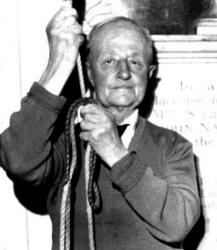 Eddie Whittingham (member 1903 – 1964)
Eddie Whittingham (member 1903 – 1964) ‘Eddie’ Whittingham rang at All Saints for 65 years, from 1903 to 1968, longer than any one else. He was a carpenter by trade, and saw active service during the 1914-18 war. He was an unexceptional ringer, and only rang the most basic of methods. But he finished in fine style, ringing literally to the end of his life on the evening of Monday 20th May 1968. The Rector described it like this in his July letter: ‘It is not given to many people to be a regular Church bellringer for more than sixty years, but this was the record of Mr. Edward John Whittingham who passed from this life in the latter part of May. Some years ago Mr. Whittingham decided that he had reached an age when he must give up ringing. I remember making a presentation to him on behalf of his fellow ringers. Soon after this, as an early stage of our plans for the restoration of the Church, the bells were taken away to Whitechapel ** for repair and re-tuning. They were then brought back and rehung in a more modern manner on ball bearings. One day Mr. Whittingham tried one of the bells again and found that he could manage it with ease. From then on he resumed his customary place in the belfry and so continued until the actual moment of his death for he passed from this life actually in the ringing chamber at a normal Monday evening practice. It is a wonderful record.’ But his life also ended with an error. He was baptised Edgar John (not Edward, as the Rector said) on June 17th 1883, but for most of his life was simply known as Eddie. The powers-that-be seem to have considered that ‘Eddie’ was too informal for a burial record, and assumed (wrongly) that his name was Edward. He died six years after his wife, and it seems no one knew that his real name was Edgar. So his tombstone shows the wrong name. (** The Rector got that wrong too – the bells were rehung in situ, not removed from the tower.)
 Bill Paice (member 1904 – 1911)
Bill Paice (member 1904 – 1911) William J Paice (Bill) was Sam Paice’s son (above) and was clearly a high flyer. He rang his first peal at St Paul’s, Wokingham in 1905, a year after joining the Oxford Diocesan Guild. The next year he composed and conducted a quarter peal of Grandsire Triples for his 21st birthday, in January 1906. The year after that he conducted his first peal (Carter’s 12 part Grandsire Triples) at All Saints. He moved to Caversham where he rang at St Peter’s, and then he moved to Finchampstead where he became tower captain. He was a Guild instructor, and served as Sonning Deanery Branch secretary from 1927 to 1942. He moved to London and rang at both St Mary Abbotts, Kensington and at St Paul’s Cathedral. In 1947 he was elected a member of the Ancient Society of College Youths. He moved again to Surrey, and finally settled in Sandhurst. He rang a total of 104 peals. At his funeral on 12 Sept 1958, prominent members of the Guild rang handbells over his grave.
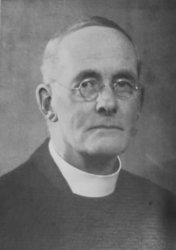 Rev Bertram Long (member 1905 – 1923)
Rev Bertram Long (member 1905 – 1923)Bertram Long was ordained in 1894 and he served as Rector at All Saints from 1904 to 1933. As a ringer he was listed along with the other ringers in Oxford Diocesan Guild records, unlike most clergy who were listed separately as 'Honorary Members'. He was clearly supportive of his ringers and they held him in great esteem, for example by ringing many peals to mark his birthday in February. He doesn't appear to have been a prolific ringer since no records have been found of any performances in which he rang. He was only listed as a ringer here from 1905 to 1923 so maybe he didn't ring during his final ten years here. However he was a founder member of the Guild of Clerical Ringers in 1937, some years after he retired. Also in 1937 he published the booklet Records of the parish church and parish of Wokingham. He died in 1948.
 Rev F E Robinson (member 1908 – 1910)
Rev F E Robinson (member 1908 – 1910)Francis Edward Robinson is undoubtedly the most famous ringer associated with All Saints Wokingham. He moved here in 1908, long after he had secured his place in history as a prodigious and capable ringer – the first person to ring 1000 peals – and also as the founder and first master of the Oxford Diocesan Guild of Church Bellringers, which he served as its first master for 30 years until his death. He is buried in All Saints churchyard along with his wife and four of his daughters. Although he died long before the foundation of the Guild of Clerical Ringers he was one of the first to organise and ring in peals with other clergy in the 1880s. Read more about him ...
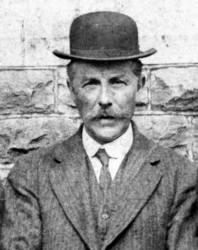 Bill Brooks (member 1914 – 1963)
Bill Brooks (member 1914 – 1963)William James Brooks (Bill) learnt to ring in Kent, where he was a gardener at Hever Castle. He moved to Wokingham in his twenties, and served in France in during First World War. He was invalided out with shrapnel wounds, which made him walk with a limp. He lived at 13 Langborough Road, and was a gardener at Southlands (now demolished) in Gypsy Lane. He was 32 when elected Foreman at the 1921 AGM, following Sam Paice’s death, and he remained in post until he died in 1963, though in the final years he was Foreman in name only and could not ring. His term of office was divided almost equally before and after the Second World War. Bill was a quiet, genteel man, well liked by those who knew him. Over the years he served the church in many roles: as sidesman, as PCC member, as church warden, and as secretary of the Saturday Evening Entertainments Committee. He also served Sonning Deanery Branch at different times as Vice Chairman, and as Branch representative to the Oxford Diocesan Guild. Bill was a competent ringer, but was nearly thirty when he rang his first peal, and he only rang a handful – seven at All Saints, six at St Paul's. (The picture was taken in 1923)
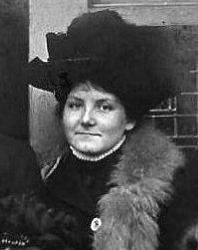 Vera Robinson (member 1918 – 1946)
Vera Robinson (member 1918 – 1946)Mabel Vera Robinson (Vera) was Rev FE Robinson’s youngest daughter, and the only one of his many children who took up ringing. She learnt to ring in her thirties, and was 34 when she became a member of the band at All Saints. She was the first Wokingham woman to ring a peal at All Saints – on 7th February 1925, and appropriately of Stedman Triples, her father’s favourite method. Equally appropriately, Rev CWO Jenkyn, who succeeded her father as Master of the Oxford Diocesan Guild, rang in the peal with her. She was neither as prodigious nor as proficient a ringer as her father but she served the band diligently for many years, ringing regularly until the 1940s, after which she became a life member of the Oxford Diocesan Guild. She was active in other areas of Parish life, for example as a sidesman, as a member of the Rural Deanery Conference, and (well after she had given up ringing) as organiser of the Murdoch Road Christian Stewardship area, where one report talks about ‘evening bible study formed under the inspiring leadership of Miss Robinson’. She gave couples about to be married a copy of The People’s Life of Christ (at least she did in the 1930s, when Joan Blackman and John (AJN) Rance were married). Vera left Wokingham in 1965 to look after sick relatives in Oxford. She died in 1979 and is buried with her father (above). The band rang a quarter peal of Grandsire Triples in her memory.
Alice Holdsworth Walker came to Wokingham with her family in 1901 and was 37 when she joined the band, even older than Vera Robinson (above) who was a close friend. Alice was deeply involved in church life. She was Assistant Organist for a while, ran many church groups over the years, and became the first Diocesan Sunday Schools Organiser. During the mid 1930s, she gave ‘delightful illustrated lectures’ with intriguing titles such as ‘Rare Birds of Wokingham’ or ‘Birds, Butterflies and possibly a Bat’. She never became a proficient ringer, but she continued until just before World War II, but remained very active in the Parish. Throughout the 1930s, Alice (with a team of helpers) organised the meat tea for the Sonning Deanery Branch AGMs, which were always held in Church House. She died in 1955, aged 74, and her obituary (by Vera) said that as well as learning to ring herself she ‘encouraged many a young lad to take up the art’. Vera and Alice seem to have made their presence felt outside Wokingham. Quite early in their ringing careers, they were mentioned in reports of Sonning Deanery Branch meetings. For example, in 1924 a discussion about the possibility of instituting combined practices was reported to involve ‘Misses Robinson & Walker, and Messrs Moth, Paice, Rance, and others’. Moth & Rance were both Foremen of other towers, and [WJ] Paice was a high flyer (above) who later became Branch secretary. So the ladies were mixing it with the Branch heavyweights. Perhaps coming to ringing later in life meant they were more articulate than the average youth with similar ringing experience. Had they become ringers earlier, like most men, perhaps they too would have achieved greater prowess as ringers and progressed to positions of leadership.
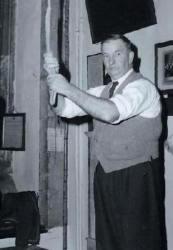 Walter Pearce (member 1925 – 1984)
Walter Pearce (member 1925 – 1984)Walter John Pearce (Wally) learnt to ring in his teens, and became a member of the band in 1925. He played a leading role throughout the post-war period, first as deputy to Bill Brooks from 1945 to 1963, and then as Foreman from 1964 to 1979. He was more outgoing and forceful than Bill, but he could be intimidating. Unlike most Foremen at All Saints, he came from a Wokingham family. The obituary of his father (also Walter) said ‘The name of Pearce has long been associated with All Saints’. Walter was a plumber by trade, and for many years he was also Sexton and Verger at All Saints, living in one of the cottages next to the church. He later lived in Waterloo Road, and spent his final years in sheltered housing opposite the church where he had rung for nearly sixty years. The ringers hired a van and helped in this final move. Walter died in August 1984.
 George Wigmore (member 1929 – 1974)
George Wigmore (member 1929 – 1974)George Wigmore's ringing career lasted 74 years, longer than any other All Saints ringer, though he only rang in Wokingham for 45 years. He learnt to ring at the turn of the 20th century, aged 11, but he didn't join the band at All Saints until 1929, when he was 40. He rang regularly until Christmas 1973, and he died the following September. He was a hire car chauffeur with Herrings (and later Brimblecombe) and at one time he became the preferred driver of Hon. Mrs Corfield, a former Wokingham Mayor. He lived in Peach Street, and in the 1930s had the distinction of having Gilbert Thurlow (below) as a lodger while Gilbert was curate at All Saints. In his final years, George moved to Sale Garden Cottages. He rang until his death in 1974.
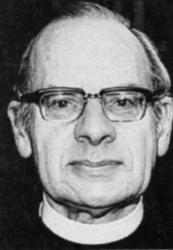 Gilbert Thurlow (member 1935 – 1937)
Gilbert Thurlow (member 1935 – 1937)Reverend AGG Thurlow probably comes second to FE Robinson as a Wokingham ringer who achieved fame in ringing outside Wokingham. He rang in Cambridge as an undergraduate and after studying at Cuddesdon Theological College he came to All Saints as a curate from 1934 to 1939 during which time he made a positive contribution in the tower. His subsequent clerical career included Precentor and a Minor Canon at Norwich Cathedral, Vicar of Great Yarmouth, Canon Residentiary at Norwich and Dean of Gloucester Cathedral before retiring to Chichester. He was a member of the Central Council of Church Bell Ringers from1945 to 1991, serving on many committees and was President from 1963 to 1969. He died in 1991, Read more about him ...
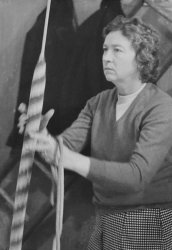 Gwen Crockford (member 1945 –1954)
Gwen Crockford (member 1945 –1954)Gwendoline Crockford learned to ring at the age of 15, one of the wave of ringers who learnt to ring after the wartime ban on ringing was lifted in 1943. She became an active member of the band, and served as Tower Secretary for three years (1951 - 1953). In September 1950 she rang a peal of Plain Bob Minor at Binfield. Her father was an inspector in the Special Constabulary, and in 1951 Gwen was one of the first police women to join the Berkshire Constabulary. A few years later she was selected for detective training and became Berkshire's first female detective. Then in 1960 she was promoted to become a woman police sergeant. She left the force in 1962 when she married John Hutson. After Wokingham, her job took her to Maidenhead and Newbury during which time she didn't ring, but she became heavily involved with ringing again after moving to Shinfield in the late 1960s where she rang until 1986, and was involved with fund raising to restore the bells to make them ringable. Her daughter, Ruth D'Alessandro wrote a trilogy of books about Gwen's life, Read more here.
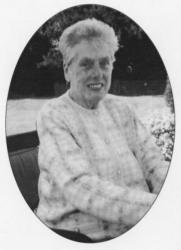 Mary Cole (member 1946 – 1980)
Mary Cole (member 1946 – 1980)Mary Florence Ada Cole was another of the wave of ringers who learnt to ring after the wartime ban on ringing was lifted. She was a second generation ringer. Her father George had joined the band in 1901, and her brother Henry rang in the mid 1930s. Mary was an active member of the growing post-war band, and she served as Tower Secretary for twenty years (1954 - 1973). Even after she gave up ringing, she continued to audit the accounts of the Sonning Deanery Bellringers. She lived her whole life at 17 Goodchild Road. After an injury when she slipped on ice while delivering milk she switched to an indoor job as an operator in the telephone exchange, in due course being in charge of the team of operators. For many years she sang in the choir, and did voluntary work after retirement She died in 2014.
 Muriel Longhurst (member 1961 – 1975)
Muriel Longhurst (member 1961 – 1975)Muriel J Longhurst came from a Wokingham family. Her grandfather was gardener to the Marquis of Downshire at Easthampstead Park and her family had moved to Ascot before she was born, but following family tradition she was christened at All Saints church in Wokingham by the then curate, Gilbert Thurlow, himself an active bellringer (above). In 1954 a college friend in Salisbury introduced her to ringing, which she found intriguing so she joined the band at Binfield and learnt to ring. When she moved to Wokingham she joined the All Saints band and became an active member, ringing quarter peals and organising outings. She rang one peal, Plain Bob Major at Warfield in 1961. In 1966 she got a job in Brigg, Lincolnshire, but still rang at All Saints when she was home for holidays, and remained a member of the band until 1979 when she sold the family home in Wokingham. She then rang at Grimsby and later at Danbury, Essex, both of which had experienced bands. She gave up regular ringing in the early 1980's after a shoulder injury, and with pressure from family and work. Muriel was a teacher by profession and she did pioneering work on the use of study skills. She taught at Edgbarrow School when it opened, and was later a head teacher in Bromley. She then used her experience to train other professionals. She also travelled widely. She retired to Farnham, and later moved back to live in Wokingham where she was a health watch volunteer. She remade contact with the band and attended several tower dinners. She died in February 2021.
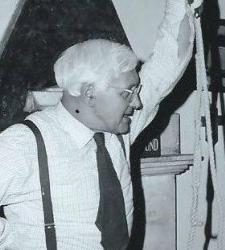 Bob Begrie (member 1962 – 1965)
Bob Begrie (member 1962 – 1965)Robert H Begrie (Bob) moved to Wokingham from London to become Chief Engineer at Pinewood Hospital in 1961. Bob and his son Keith (who later moved to St Paul’s, but remained a supporter of All Saints into the 1970s) both joined the band at All Saints. Bob was an experienced and competent ringer who rapidly made a significant contribution to the band, both as a ringer and a teacher. When Walter Pearce became Foreman in 1964, Bob would have been the obvious choice to become his deputy, but for some reason he wasn’t elected to the post until 1966, and he then served for the next nine years, until his early death in 1974.
William Burkey (Bill) rang at All Saints for ten years, holding one or more offices for most of those years. His wife and two daughters also rang. Bill holds the record for the number of tower offices held simultaneously. In the mid 1970s he was Deputy Foreman, Treasurer and Steeple Keeper at the same time. He was a prime mover of the proposal to install a glass screen between the ringing gallery and the nave in the 1970s (something finally achieved in 2016). He was a Production Engineer by profession, and later a lecturer at Slough College.
 John Elsworth (member 1971 – 1974)
John Elsworth (member 1971 – 1974)John Elsworth and his wife Hilda rang at All Saints from 1971 to 1974, and their son David also rang in 1974. John was born in Liverpool in 1930, and joined the Cathedral choir as a boy. He then learnt to ring and became a member of the Liverpool Cathedral band – one of the original ringers, and the longest surviving member of the band that rang for the Cathedral hallowing ceremony on 17 November 1951 during a visit by Princess Elizabeth (later Queen Elizabeth). John and Hilda were married at the Cathedral in June 1954. He was an honorary member of the Cathedral band until his death in 2021. In later life the family lived in Bunbury, Cheshire, where he served as both tower captain and churchwarden for many years. He also served the Chester Diocesan Guild as treasurer and eventually became a life member. He was a keen historian, and became an expert in both local history and Cheshire churches. He took a Masters degree when he retired.
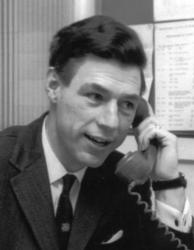 Francis Moore (member 1972 – 1980)
Francis Moore (member 1972 – 1980)Francis Moore relocated from Merseyside in 1971, and succeeded Bill Burkey (above) as Industrial Liaison Officer with DTI in Richmond. He made friends with Bill, who suggested that Wokingham was a good place to live, and introduced Francis and his family to All Saints. Before long Francis, his wife Audrey, and their daughters Lindsey and Alison all learnt to ring, and Francis succeeded Bill as Deputy Foreman in 1977. At the time Walter Pearce (above) was still Foreman but less able to play an active role, which left the main responsibility of running the tower to Francis. During his time in office, Francis helped to foster better relations between ringers and church, integrating the ringers more into church life. He gave up ringing after a back injury in 1979. Francis was a Chartered Electrical Engineer, and a member of the Chartered Institute of Marketing. (Picture courtesy of Middlesex Chronicle)
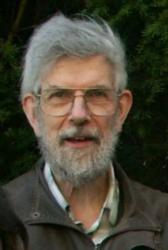 John Harrison (rang here 1967 – 1968, member 1977 – present)
John Harrison (rang here 1967 – 1968, member 1977 – present)John A Harrison grew up in Kirkby-in-Ashfield, Nottinghamshire (then with a 5-bell tower) where he learnt to ring in 1959, and was tower captain briefly before studying in Cambridge and ringing with the Cambridge University Guild. He moved to Wokingham in 1967 and despite having been very active up to that point, gave up regular ringing the following year. He has rung continuously at All Saints since 1977. He was Foreman from 1980 to 1982, from 1988 to 1990, and from 1999 to 2017 and has held most other tower offices. He has been a member of the Central Council of Church Bellringers since 1989 and has served on and chaired its Education, Public Relations, and Biographies Committees. Locally he has served as both Training Officer and Chairman of Sonning Deanery Ringers. He wrote a monthly column on training in The Ringing World from 1999-2007, and has written many books on ringing, including the history of ringing at All Saints. He received a Civic Award from the Mayor of Wokingham in 2006 for services to the community through bellringing. Professionally John was a Chartered Engineer and a Chartered Ergonomist.
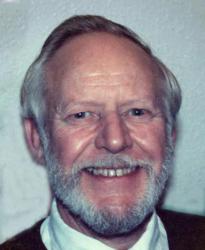 Stewart Gibson (member 1978 – 1991)
Stewart Gibson (member 1978 – 1991)W Stewart Gibson was Foreman in 1983 (the shortest term apart from Fred Mattingley in 1920) and again from 1993 to 1994. He also served four years as Deputy Foreman and a year as Secretary. He learned to ring at Boyne Hill, Maidenhead after meeting his wife Pearl who was already a ringer, and he served two years there as Tower Captain. After moving to Northumberland he was Tower Captain of Morpeth Clock Tower Bellringers from 1971 to 1977, where he and Pearl re-established change ringing after a long period of only chiming and curfew ringing. He joined the band at All Saints in 1978 after moving to Wokingham. He was at times Sonning Deanery Deputy Ringing Master, Vice Chairman and Chairman, and he and Pearl represented the Deanery on the General Committee of the Oxford Diocesan Guild. from 1995 to 1997. After retirement, he moved to Fladbury, Worcestershire, and from 2002 he was Peal Secretary of the Worcestershire and Districts Change Ringing Association. He died in January 2008. He rang 23 peals, over half of them in Wokingham.
 Simon Tomlinson (member 1978 – 1989)
Simon Tomlinson (member 1978 – 1989)Simon J Tomlinson started ringing methods on handbells at the age of 9 during lunch times at school in Reading. At age 11 he started to learn to ring tower bells at All Saints (along with his mother) and became an active member of the band. In 1985, while still at school, he served as Steeple Keeper, and as well as looking after the bells fitted modern locks throughout the tower. He served as Master of the University of Bristol Society of Change Ringers from 1986 to 1987, and called his first peal (appropriately of Bristol Surprise Major) on the eve of his 21st birthday. He remained in Bristol after graduating and served as Ringing Master at Christ Church and All Saints from 1992 – 1994. Over the years ha has been a very active quarter peal ringer, ringing over 50 in some years, and has completed many method series including the alphabet, the months of the year and the Magic Roundabout Characters. He became deputy ringing master at Westbury-on-Trym and ringing master of the Bristol Branch of the Gloucester & Bristol Association. Outside ringing he is a chartered engineer and works for Airbus.
 Theresa Scott (member 1978 – 1992)
Theresa Scott (member 1978 – 1992) Theresa A Scott (Terry) learnt to ring at St John the Evangelist, Sidcup, Kent in 1970. She rang with the University of Bristol and London University Societies before moving to Wokingham and joining the band at All Saints. She rang here from 1978 to 1990, along with her husband John, who she taught to ring shortly after arriving. She served as tower secretary in 1980 and as Deputy Foreman in 1986. After leaving Wokingham. She rang at All Saints Maldon, Essex before returning to Oxford Diocese in 1993. She was ordained as a Permanent Deacon in 1992 and in 1994 was one of the first women priests ordained in the Church of England. From 1994 to 2001 she was non stipendiary Associate Vicar of Drayton, Oxfordshire, following in the eminent footsteps of FE Robinson (above). While Rector of Burchetts Green, Berkshire (no bells) in 2005, Theresa became Area Dean of Maidenhead, and an Honorary Canon of Christchurch Cathedral Oxford. In 2008 she moved to become Team Rector of Bicester, where she served until her retirement in 2013. In retirement Theresa and John live in both Thame, Oxon and Auckland, New Zealand, and ring occasionally in both places.
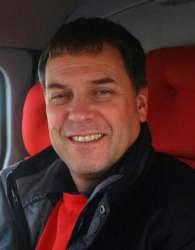 Jon Tutcher (member 1981 – present)
Jon Tutcher (member 1981 – present)Jon P Tutcher was All Saints’ youngest Foreman since Albert Hill in 1880 – he was 28 when first elected to the office, not quite as young as Albert who was only 24. Like Albert, Jon came from the West Country (Somerset not Wiltshire). He learnt to ring in 1967 at Ilminster (a heavy eight) ‘on a diet of Grandsire Triples and call changes’. He studied at London University where he rang for a couple of years as a member of the University of London Society of Change Ringers. Jon moved to Wokingham in 1977 and started ringing with the Wokingham All Saints band in 1979, becoming a member in 1980. He was Foreman in 1984-85 and 1995-96, and has held every Tower Office at one time or another. Jon is a Chartered Engineer.
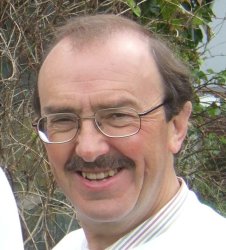 Steve Smith (member 1983 – present)
Steve Smith (member 1983 – present)Stephen R Smith first became aware of church bells when as a small boy he heard the sound of them drifting across the town of Keynsham near Bristol (which as anyone old enough to remember a well known radio advertisement is spelt K-E-Y-N-S-H-A-M). He learnt to ring at Bitterne Park in Southampton and while at university he joined the Oxford University Society and regularly rings on their 'Golden Oldies' reunion tour each year. He married a ringer, Barbara, and his son Andrew (below) also rings. Steve & Barbara rang at Harrow before moving to in Wokingham 1983 and joining the All Saints band. Shortly afterwards another Stephen R Smith joined the band and to tell them apart he became SRS1, with the later arrival known as SRS2. During his time in Wokingham Steve has served as Tower Secretary (1987 – 1989), Deputy Foreman (2003 – 2006, 2009 – 2012 & 2017) and Foreman (2018 – 2019). Outside the tower he has been both churchwarden and PCC Treasurer, he is Chairman of Governors at All Saints School, and worked for 27½ years at Hewlett-Packard.
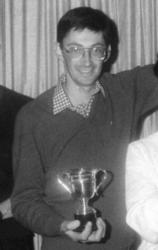 Tony Pullan (member 1984 – 1988)
Tony Pullan (member 1984 – 1988)Anthony G Pullan learnt to ring at Whitchurch in Devon, and then rang at Windsor before moving to Wokingham. Although he only lived here for five years, he played a very active role in developing the band. He was Foreman in 1986 and 1987, having served as Deputy Foreman the previous year. He and Jon Tutcher between them led the band though its years of peak performance. Tony is seen here in May 1986 holding the trophy for the Guild 8-bell striking competition. Tony was as active outside the tower as he was within it. He was secretary of East Berks & South Bucks Branch from 1981 to 1983 and General Secretary of the Oxford Diocesan Guild from 1984 to 1988. When he married he moved to Wanborough in Wiltshire, where he played an active role getting the bells restored some years later. Tony is a member of the Ancient Society of College Youths.
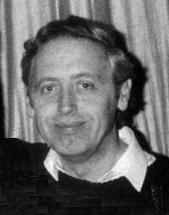 John Wells (member 1986 – 1987)
John Wells (member 1986 – 1987)Ernest John Wells came to Wokingham as an experienced ringer, and rang here from 1986 to 1987. He learnt to ring in the Guildford area, and called his own first peal at Farnborough in 1951. His second was called by Bill Paice (above). He has rung mainly in the Reading area, except for the period ringing in Wokingham. Shortly after returning to Reading he returned to call the 1990 peal of Wokingham Surprise Major for the 800th anniversary of All Saints. He is a long standing member of the Oxford Diocesan Guild of Church Bellringers, which he served as Secretary from 19911996 and as Master from 1996 to 2002. He then chaired the Guild’s Education committee for six years. He has rung over 2000 peals, over 1500 with his wife June, and has conducted over 400 of them. He is a member of the Ancient Society of College Youths.
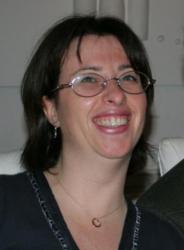 Julie Goodchild [Branson] (member 1987 – present)
Julie Goodchild [Branson] (member 1987 – present)Julie B Goodchild (née Branson) was the first woman to become Tower Foreman at All Saints, and she was also the only Foreman in the modern era who learnt to ring at All Saints. She learnt in 1986 while still at school, and has rung here ever since apart from a break for university when she rang with both the York University Society and the York Colleges Guild, serving both as secretary. She returned to Wokingham after graduating, and served as Tower Secretary from 1990 to 1993, and as Foreman in 1997 and 1998. Her husband was not a ringer when he met her, but learnt to ring soon afterwards. Julie is a chartered accountant by profession.
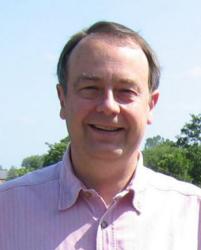 Nigel Herriott (member 1990 – 2000)
Nigel Herriott (member 1990 – 2000)W Nigel G Herriott learnt to ring at Wonston near Winchester during his final year at school, and he subsequently rang at Winchester Cathedral. His ringing developed rapidly with the Oxford University Society, particularly under the influence of David Brown. He rang his first peal and over 100 more while there, and served as the Oxford University Society’s steeple keeper. He moved to Birmingham, where he became a proficient 12-bell ringer, and then to Warwick, where he was tower captain. During his captaincy he developed the band’s 10-bell method ringing repertoire and conducted the Warwick band in the national 12-bell striking competition. He moved to Wokingham in 1990 and served as Foreman from 1991 to 1992. He devised Wokingham Surprise Major, the new method rung in the peal for the church’s 800th anniversary. After leaving Wokingham he rang in Reading before retiring to Romsey, where he is a churchwarden at the Abbey. Between 2012 and 2014 he was chairman of the board of The Ringing World. Nigel is a Chartered IT Professional, a Freeman of Berwick-upon-Tweed, and a member of the Ancient Society of College Youths.
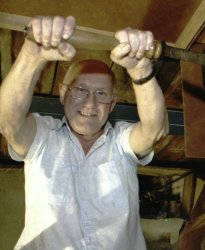 Arthur Moss (member 1996 – 2010)
Arthur Moss (member 1996 – 2010)Arthur moved to Wokingham in middle age. He became aware of ringing when his daughter Hilary learnt while she was at school, but he didn't learn for another 15 years, by which time he was in his mid 50s. His life as a shift worker `keeping the lights on' at Slough power station meant that he had to miss many practices, so learning took longer and progress was harder than it would otherwise have been. He never took to method ringing but was happy to cover and became a steady Tenor ringer. Having joined the band he became one of its most reliable members over a period of 15 years.
For ten of those years he served as Steeple Keeper, a role that suited him well with a practical engineering background. He only stood down when he felt that he wasn't agile enough to climb over the bell frame while working on the bells, but he continued to help with maintenance jobs for many years after formally handing over the job.
During the bell restoration project in 2004 Arthur played a leading role and he was in his element. His white boiler suit stood out from both the bell hangers in dark blue overalls, and the other ringers and parish volunteers who didn't have any professional attire.
He applied his practical skills to several improvements in the tower. These included fitting a safety rail to the clock winding platform and adding steel plate on the back of the door to the tower stairs after vandals tried to smash their way through it.
He had other talents. He once gave a stirring performance of Albert and the lion at a ringers dinner, and as a whisky connoisseur he ran a whisky tasting evening to raise funds for the bell restoration project.
As well as looking after the bells, Arthur faithfully wound the clock every week until it was fitted with an auto-winder shortly before he stood down, and he took a personal interest in its performance. On tower open days he was always happy to be in the clock room explaining its workings to visitors.
Arthur was always cheerful and willing to help. He died in 2021 and the ringers rang half muffled bells at his funeral.
 Charles Herriott (member 1997 – 2000)
Charles Herriott (member 1997 – 2000)Charles Herriott comes from a ringing family – his father (above), his sister (below) and his mother all ring, as did his grandfather. Charles began learning to ring at All Saints when he was 9. He rang is first quarter peal aged 11 and his first peal at 13. When he was 20 he rang a peal of Bristol Surprise Sixteen in a band whose average age was just over 24 – the youngest band by far to have rung a peal on sixteen bells. He served as Master of the University of London Society of Change Ringers in 2006-7. He married Rachel Smith and they now ring in Hertfordshire. (The picture here was on an outing shortly after he learned to ring.)
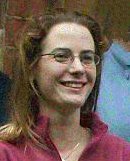 Elizabeth Barter (member 1998 – 2006)
Elizabeth Barter (member 1998 – 2006)Elizabeth Barter (now Arkell) rang in Wokingham between 1998 and 2006. She learned to ring in Worth, West Sussex, shortly before the fire in 1986, which prevented ringing for quite some time. She won an organ scholarship to Sidney Sussex College, Cambridge, and while in Cambridge rang her first peals with the Cambridge University Guild. Her first teaching job was in Reading was when she joined the band at All Saints Wokingham, where she was also Musical Director. That ensured good communication between ringers and choir but it limited her ringing. In 2006 she moved to Staffordshire where she taught and rang in Abbots Bromley, including helping to teach some of the school pupils to ring, and when she moved into Lichfield she also rang at the Cathedral. After moving to Hampshire in 2012 she occasionally rang at Winchester Cathedral. Then in 2016 she married and moved to Northamptonshire where she is Head of Academic Music and School Organist at Oundle School, and Director of Music at St John the Baptist, Peterborough. Sadly her duties as an organist make it hard to ring other than occasionally.
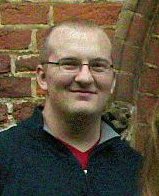 Andrew Smith (member 2001 – 2007)
Andrew Smith (member 2001 – 2007)Andrew Smith (Andy) comes from a ringing family – his parents and sister were ringers. He learnt to ring at All Saints in his teens, and before going to university he produced the first tower website (which preceded this one). While at Cambridge he served as Assistant Master of the Cambridge University Guild. In 2010 he married a Canadian wife, and on the day of his wedding in Canada a Cambridge University band rang a peal rung at All Saints in five methods named after places where he grew up (Wokingham), studied (Cambridge), proposed (Trafalgar Square) and the place (near Edmonton) and country Canada) where he now lives. He is a structural engineer by profession.
 Mhairi Miller (member 2006 – 2014)
Mhairi Miller (member 2006 – 2014)Mhairi learnt to ring when she was 11, and rather than sticking to the lighter bells she learnt how to handle bigger bells as well, regularly ringing the Tenor. She rang the Tenor (¾ton) at St Paul's Wokingham in the team that won the 2007 striking competition. In 2007 she went on a bell maintenance course, and she served as Steeple Keeper in 2010 & 2011. She also entered the Oxford Diocesan Guild's Young Ringer's Award scheme and in 2011 was awarded a Gold. She was also a member of the Guild's team that entered the first ever Ringing World National Youth Contest and won the method ringing category. She studied zoology at St Andrews University before doing a Masters at Imperial College and then a PhD at Southampton. While at St Andrews she rang with the St Andrews University band, and shortly after arriving rang a quarter peal at the University Chapel to welcome a new Chaplain, but since then she has only rung intermittently.
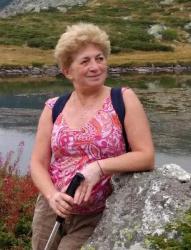 Penka Kasarova (member 2016 – 2018)
Penka Kasarova (member 2016 – 2018)Penka lived and worked in Bulgaria, and when she retired she moved to Wokingham where one of her daughters lived. In Bulgaria she had watched a lot of British television including Midsomer Murders, and when she saw Ring Out Your Dead, the episode about a band of bellringers, the ringing so intrigued her that she decided she would like to learn when she came to England.
After learning to ring she became a reliable member of the band, and rang her first quarter peal in summer 2018. But her ringing career was interrupted when she returned to Bulgaria for family reasons.
 Helen Maynard (member 2020 - present)
Helen Maynard (member 2020 - present) Helen was introduced to ringing at Wokingham by her father Nigel Herriott (above) some time after her brother Charles (above) had learnt to ring. At the time Helen didn't take it up but after the family moved to south Reading she learnt to ring at Shinfield. She went to Birmingham University and while there rang her first peal with the St Martins Guild, at Edgbaston. During her time in Birmingham she rang at St Paul's in Birmingham's Jewellery quarter, and after moving to work in London she rang at Southwark Cathedral where she met her husband David (below). In 2019 she got a planning job in Bracknell, and moved back to Wokingham, where she joined the All Saints band.
 David Maynard (member 2020 - present)
David Maynard (member 2020 - present) David moved to Wokingham in 2019 with his wife Helen (above). He learnt to ring in York, at SS Philip & James Clifton, and also rang at St Wilfrid's and the Minster. He took up handbell ringing while studying history at Exeter University. For nearly ten years he lived in London, working in corporate governance. He served as Master of the Ancient Society of College Youths in 2011-12. He briefly returned to Exeter 2016-19, and joined the bands at Heavitree and Exeter Cathedral. He served as Branch Ringing Master for the Exeter branch of the Guild of Devonshire Ringers, and organised a regular handbell band. Shortly after moving to Wokingham he rang his 1000th peal, with exactly 500 tower bell and 500 handbell peals. The only other ringers at Wokingham to ring 1000 peals were Rev F E Robinson and John Wells (both above).
| Back to Top | Back to Ringers | Return to Home page |